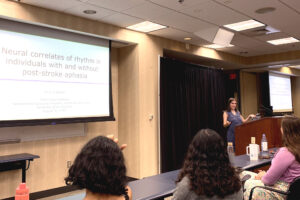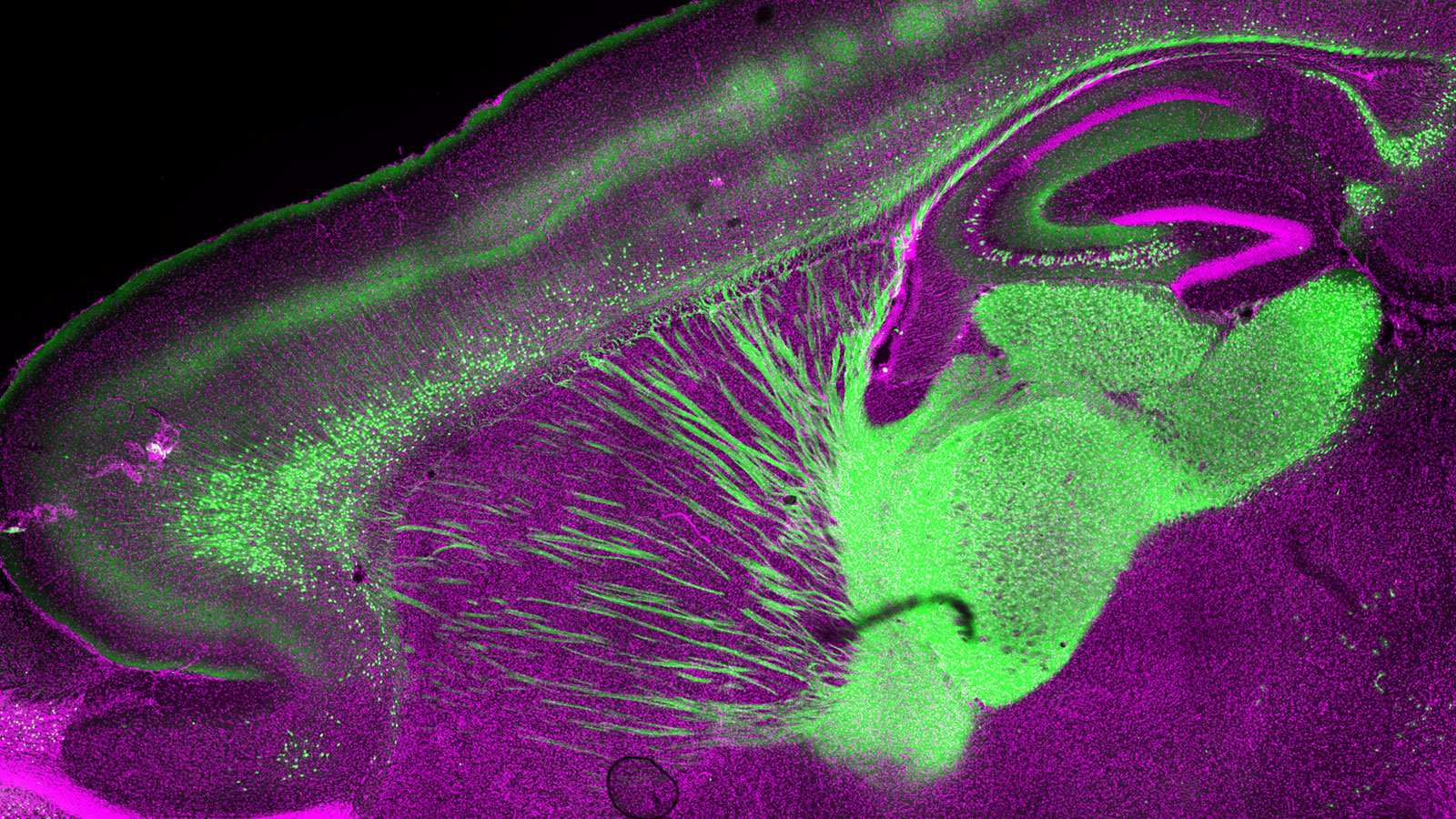The Program Representative will participate in questioning the student, particularly in fundamental knowledge of neuroscience, since they should be familiar with the material taught in the required courses. The Qualifying Exam meeting should last approximately two hours, including the oral exam and closed discussions.
The Qualifying Exam comprises two parts: written proposal and oral exam. The committee confers in the student's absence at the start of the meeting, at which time the committee reviews the student's performance in classes (based on grades provided by the Program Coordinator) and discusses the scoring of the written proposal (the written part will already have been approved as acceptable prior to the meeting).
Criteria for assessing the document include (but are not limited to) the following: scientifically sound, logical, sufficient background/review of field, well-organized, clearly written, proper grammar/spelling. The Program Representative polls each member to reach a consensus on a score. The student will then return to the committee and begin their oral defense of the proposal.
The examination begins with the student giving no more than a 5-minute overview of the topic of their review and specific aims, followed by questions from the faculty designed to evaluate the student's general knowledge, ability to integrate didactic information into research design, capacity to connect and synthesize interrelated ideas and ability to think clearly and critically.
The exam should take approximately 2 hours, but the exact time is at the discretion of the committee. Prior to the meeting, committee members will receive a list of topics the student is expected to be familiar with from coursework (this document will be formed from the syllabi from NURO 340 and 345). The examiners are also free to question the student about the content taught in other courses that they've taken or knowledge relevant to the student's area of research.
Committee members will prepare in advance for the meeting by reading the review and specific aims and identifying several lines of questioning (on both the review itself and general background) to pursue during the oral exam. All committee members should actively participate in questioning the student.
Although a wide variety of questions may be deemed appropriate during the oral exam, the committee's focus should be to ascertain whether the student has established a critical knowledge base essential for understanding his/her research project and achieving success as he/she progresses through graduate school. It is the Program Representative's responsibility to keep everyone "on track" (in terms of time, lines of questioning, and overall direction) during the oral exam.
Upon conclusion of the oral exam, the committee confers in the student's absence to evaluate the student's performance. The Program Representative polls each member to reach a consensus as to whether the student passed or failed the exam. A conditional pass is a possible outcome with conditions to be established by the committee.
Two forms will be completed by the Program Representative, one for the Neuroscience Program and one for the graduate school. The Program Representative will then inform the student of the results and go over in detail the committee's evaluation. It should be noted that both the Neuroscience program and the graduate school allow a student to repeat the examination should the student fail the first examination.
Both the student's written document and performance during the oral exam must be deemed satisfactory by all committee members. The written document must be approved before the oral exam. Inadequate performance by the student in the oral exam is grounds for failure and will necessitate a second oral exam and/or additional remediation (within 90 days).
In such cases, it is the Program Representative's responsibility to delineate (with input from the committee) what remedial steps are most appropriate for a particular student and how the committee will evaluate the student a second time. Examples of remediation used successfully in the past include the following: provide student with a specific reading list to augment background knowledge relevant to his/her project followed by a second oral exam to test understanding of the assigned material; student meets with an assigned faculty member for "tutorials" to remedy specific gaps in knowledge or to improve breadth of understanding of fundamental cell and neuroscience topics (e.g. discuss chapters from Kandel's textbook).
After the qualifying exam, the Program Representative will prepare a brief report summarizing the student's performance and outcome of the exam. The representative will ask for input from all committee members and then provide the report to the DGS and the Program Coordinator within one week of the exam who will forward to the mentor and the student. After completing the exam, the student should schedule their first regular committee meeting, which should occur within 3-6 months after the exam.
If the committee recommends that the student must repeat the examination, the Program Coordinator will schedule the committee meeting. Otherwise, it is the student's responsibility to schedule the first regular committee meeting. Unless requested, the Program Representative will not be a part of the regular committee and a chair will be chosen by the student with recommendations from the mentor. At the first committee meeting, the student will present their thesis proposal. A written proposal, in NIH NRSA format, must be provided to the committee at least one week prior to the meeting. For all subsequent meetings, students are expected to provide the committee with a brief (2-3 page) progress report at least one week prior to the meeting.
 The Ph.D. qualifying exam is typically completed by the end of the third year of graduate training. Successful qualification represents the final checkpoint for admission into candidacy for a Ph.D. degree. The purpose of the qualifying examination is to test the student's general knowledge of neuroscience and familiarity with published research related to their dissertation project, and to determine whether the student possesses and can communicate analytical abilities needed for a scholarly career.
The Ph.D. qualifying exam is typically completed by the end of the third year of graduate training. Successful qualification represents the final checkpoint for admission into candidacy for a Ph.D. degree. The purpose of the qualifying examination is to test the student's general knowledge of neuroscience and familiarity with published research related to their dissertation project, and to determine whether the student possesses and can communicate analytical abilities needed for a scholarly career.